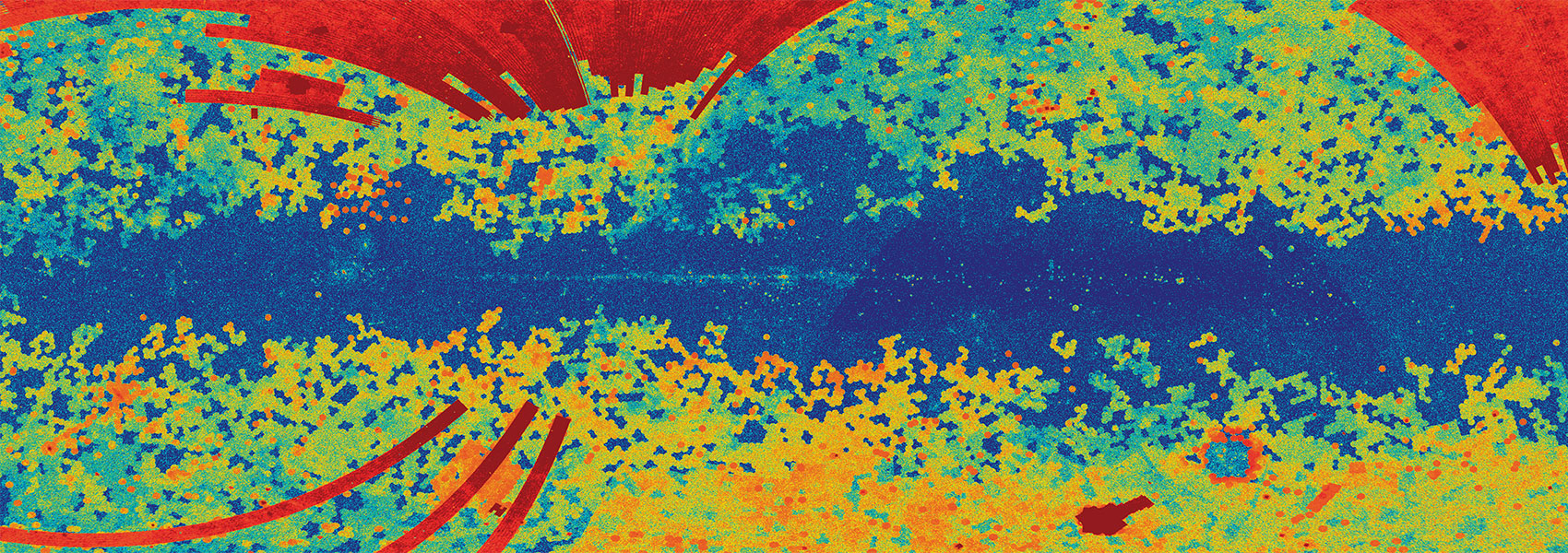December
2011
•
2011ApJ...743..144T
Authors
•
Trump, Jonathan R.
•
Weiner, Benjamin J.
•
Scarlata, Claudia
•
Kocevski, Dale D.
•
Bell, Eric F.
•
McGrath, Elizabeth J.
•
Koo, David C.
•
Faber, S. M.
•
Laird, Elise S.
•
Mozena, Mark
•
Rangel, Cyprian
•
Yan, Renbin
•
Yesuf, Hassen
•
Atek, Hakim
•
Dickinson, Mark
•
Donley, Jennifer L.
•
Dunlop, James S.
•
Ferguson, Henry C.
•
Finkelstein, Steven L.
•
Grogin, Norman A.
•
Hathi, Nimish P.
•
Juneau, Stéphanie
•
Kartaltepe, Jeyhan S.
•
Koekemoer, Anton M.
•
Nandra, Kirpal
•
Newman, Jeffrey A.
•
Rodney, Steven A.
•
Straughn, Amber N.
•
Teplitz, Harry I.
Abstract
•
We present Hubble Space Telescope Wide Field Camera 3 (WFC3) slitless grism spectroscopy of 28 emission-line galaxies at z ~ 2, in the GOODS-S region of the Cosmic Assembly Near-infrared Deep Extragalactic Legacy Survey. The high sensitivity of these grism observations, with >1σ detections of emission lines to f > 2.5 × 10-18 erg s-1 cm-2, means that the galaxies in the sample are typically ~7 times less massive (median M * = 109.5 M ⊙) than previously studied z ~ 2 emission-line galaxies. Despite their lower mass, the galaxies have [O III]/Hβ ratios which are very similar to previously studied z ~ 2 galaxies and much higher than the typical emission-line ratios of local galaxies. The WFC3 grism allows for unique studies of spatial gradients in emission lines, and we stack the two-dimensional spectra of the galaxies for this purpose. In the stacked data the [O III] emission line is more spatially concentrated than the Hβ emission line with 98.1% confidence. We additionally stack the X-ray data (all sources are individually undetected), and find that the average L [O III]/L 0.5-10 keV ratio is intermediate between typical z ~ 0 obscured active galaxies and star-forming galaxies. Together the compactness of the stacked [O III] spatial profile and the stacked X-ray data suggest that at least some of these low-mass, low-metallicity galaxies harbor weak active galactic nuclei.
Based on observations with the NASA/ESA Hubble Space Telescope, obtained at the Space Telescope Science Institute, which is operated by AURA Inc., under NASA contract NAS 5-26555.
Links
-
PREPRINT
http://arxiv.org/abs/1108.6075
-
NED
https://ned.ipac.caltech.edu/uri/NED::InRefcode/2011ApJ...743..144T
-
ELECTR
https://iopscience.iop.org/article/10.1088/0004-637X/743/2/144
-
SIMBAD
http://simbad.u-strasbg.fr/simbo.pl?bibcode=2011ApJ...743..144T
-
PDF
https://iopscience.iop.org/article/10.1088/0004-637X/743/2/144/pdf
-
DATA
https://archive.stsci.edu/mastbibref.php?bibcode=2011ApJ...743..144T
-
DATA
https://cda.harvard.edu/chaser?obsid=441,581,582,1431,1672,2239,2312,2313,2405,2406,2409,8591,8592,8593,8594,8595,8596,8597,9575,9578,9593,9596,9718,12043,12044,12045,12046,12047,12048,12049,12050,12051,12052,12053,12054,12055,12123,12128,12129,12135,12137,12138,12213,12218,12219,12220,12222,12223,12227,12230,12231,12232,12233,12234
-
DATA
https://hst.esac.esa.int/ehst/#/pages/search;bibcode=2011ApJ...743..144T




